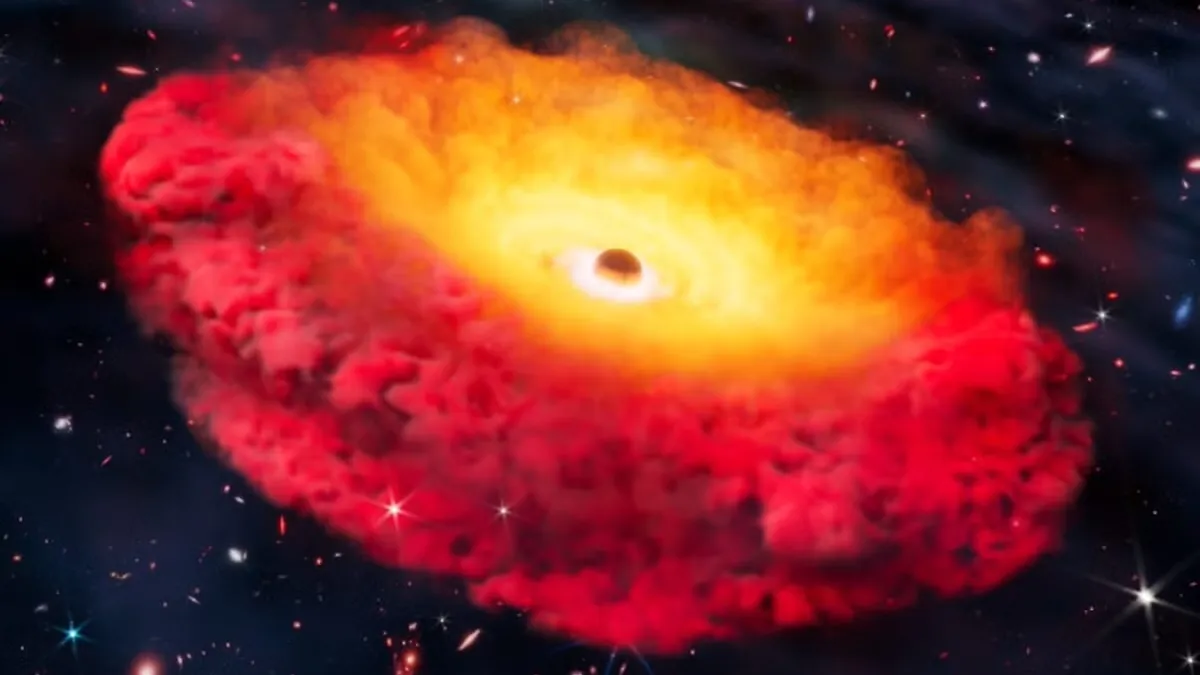
Scientists utilizing the James Webb Space Telescope (JWST) have made a groundbreaking discovery by identifying the earliest black hole known to date, which dates back over 13 billion years. This remarkable black hole, alongside its host galaxy, is collectively referred to as CAPERS-LRD-z9. Remarkably, this cosmic entity existed merely 500 million years after the Big Bang, offering researchers a unique glimpse into the universe's formative years. This discovery is detailed in a study published on August 6 in the Astrophysical Journal Letters.
According to study coauthor Anthony Taylor, an astronomer at the University of Texas, Austin, "When looking for black holes, this is about as far back as you can practically go." He emphasized that this discovery is pushing the limits of what current technology can detect. CAPERS-LRD-z9 belongs to a category of galaxies known as Little Red Dots, a term derived from their small size relative to other galaxies and their distinctive red light emissions observed through the JWST's advanced infrared sensors.
Interestingly, while Little Red Dots appear to shine brightly, suggesting they may host numerous stars, current cosmological theories propose that such early galaxies likely had fewer stars. The unexpected presence of these galaxies was one of the major surprises revealed by early data from the JWST. Study coauthor Steven Finkelstein, also from UT Austin, remarked, "They looked nothing like galaxies seen with the Hubble Space Telescope. Now, we're in the process of figuring out what they're like and how they came to be."
To gain deeper insights into CAPERS-LRD-z9 and similar Little Red Dots, researchers conducted a detailed investigation using the JWST. They identified a distinct pattern of wavelengths of light produced when high-velocity gas falls into the black hole. While other potential black holes have been detected farther away than CAPERS-LRD-z9, this light pattern confirms it as the earliest verified black hole, suggesting that other Little Red Dots may also harbor black holes at their centers.
The black hole situated at the heart of CAPERS-LRD-z9 is impressively massive, estimated to be around 38 million times the mass of the Sun. This figure is approximately ten times the mass of Sagittarius A*, the supermassive black hole located at the center of our own Milky Way galaxy. Notably, the mass of this black hole constitutes about 5% of the total mass of all the stars in its galaxy, a ratio significantly higher than what is observed in contemporary galaxies. This finding supports the notion that early black holes may have grown at a much faster pace than previously thought, with Finkelstein stating, "Or they started out far more massive than our models predict."
The discovery of CAPERS-LRD-z9 may also shed light on why Little Red Dots emit red light. Researchers hypothesize that a dense gas cloud surrounding the black hole could shift the light it emits into longer, redder wavelengths. Future studies of CAPERS-LRD-z9 are expected to yield even more information about black holes and galaxies from the early universe. Taylor remarked, "This is a good test object for us. We haven't been able to study early black hole evolution until recently, and we are excited to see what we can learn from this unique object."